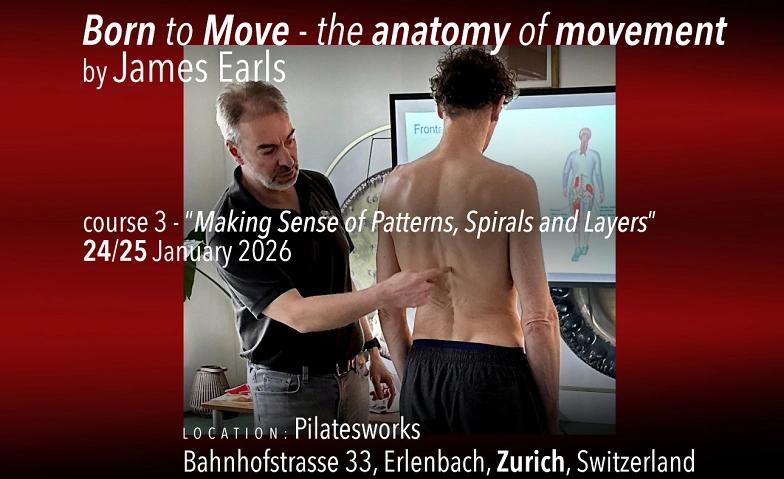last of the 3 part course- anatomy of movement
Making Sense of Patterns, Spirals, and Layers
There is an easy to follow pattern to the soft tissues that makes sense of the shoulder’s evolution, its movement, and its function. Seeing the logical arrangement and sequence of fibre direction and tissue layering opens new worlds of assessment, treatment and rehabilitation strategies that you can take advantage of with your clients.
Most people get confused by the shoulder complex but it does not have to be that way. It is difficult to appreciate the full range of movement possibilities in the shoulder girdle if you only view each muscle in turn. Viewing the patterns in a new way provides clarity of the shoulder’s function and ability to control movement - this workshop presents the full shoulder arrangement in a way that makes sense, is easy to remember, and simple to put into practice.
Once we have revealed the shoulder’s simplicity we will continue to the torso by exploring the spinal muscle patterns. Using practical explorations will see and feel how the obliques, intercostals and quadratus lumborum all cooperate to produce and control rotational patterns.
This third and final workshop in the series will give the opportunity to put everything you have learned in the previous
...
mehr anzeigen
last of the 3 part course- anatomy of movement
Making Sense of Patterns, Spirals, and Layers
There is an easy to follow pattern to the soft tissues that makes sense of the shoulder’s evolution, its movement, and its function. Seeing the logical arrangement and sequence of fibre direction and tissue layering opens new worlds of assessment, treatment and rehabilitation strategies that you can take advantage of with your clients.
Most people get confused by the shoulder complex but it does not have to be that way. It is difficult to appreciate the full range of movement possibilities in the shoulder girdle if you only view each muscle in turn. Viewing the patterns in a new way provides clarity of the shoulder’s function and ability to control movement - this workshop presents the full shoulder arrangement in a way that makes sense, is easy to remember, and simple to put into practice.
Once we have revealed the shoulder’s simplicity we will continue to the torso by exploring the spinal muscle patterns. Using practical explorations will see and feel how the obliques, intercostals and quadratus lumborum all cooperate to produce and control rotational patterns.
This third and final workshop in the series will give the opportunity to put everything you have learned in the previous workshops into practice. You will be able to create any movement in and tissue in almost any position. You will be able to predict and describe the movement reaction as it passes through the body with clarity and confidence. You will have learned to take control of the anatomy of movement.
weniger anzeigen



